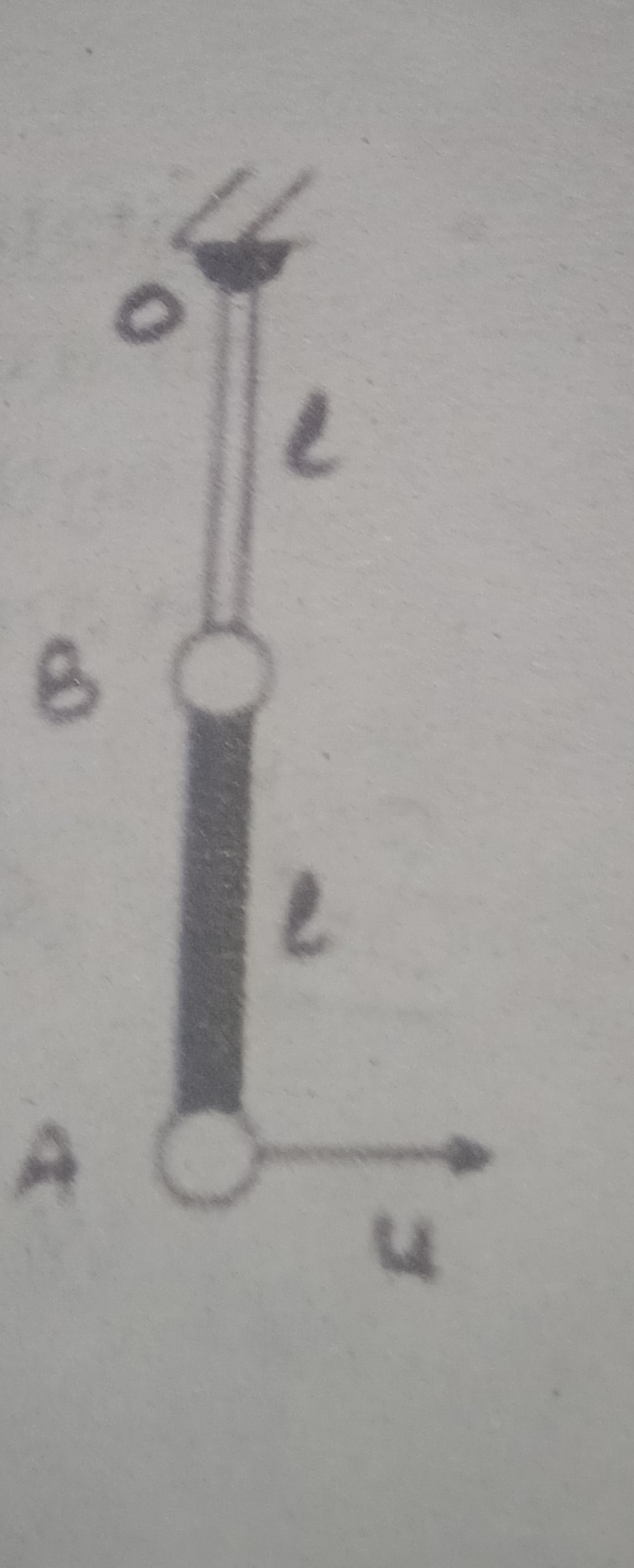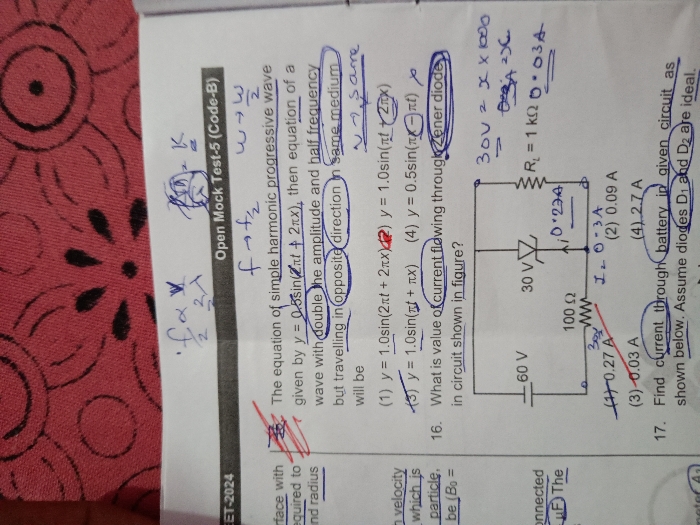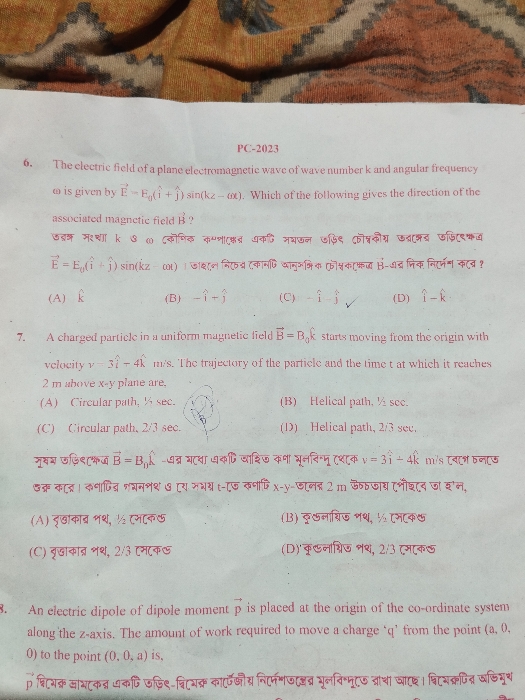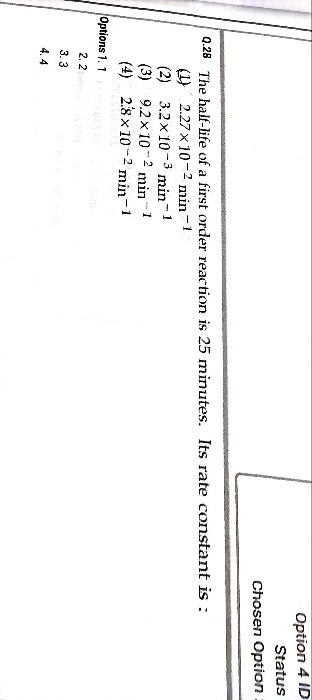CBSE Class 12-science Answered
use huygens principle to explain the formation of diffraction pattern due to a single slit illuminated by a moochromatic source of light. when the width of slit is made double the original width,how would this affect the size and intensity of the central diffraction band?
Asked by Sakshipragya1912 | 20 Jun, 2018, 11:27: AM
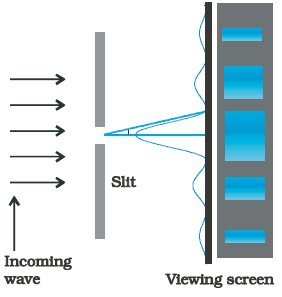
When a sinlg narrow slit is illuminated by a monochromatic source, a broad pattern with centralbright region is seen as shown in the above figure. On both sides there are alternate dark and bright regions, the intensity becoming weaker away from centre.
To understand this, let us consider the figure shown below. A parallel beam of light falling on a single slit LN of width a. The diffracted light goes on to meet a screen. The mid point of slit is M.
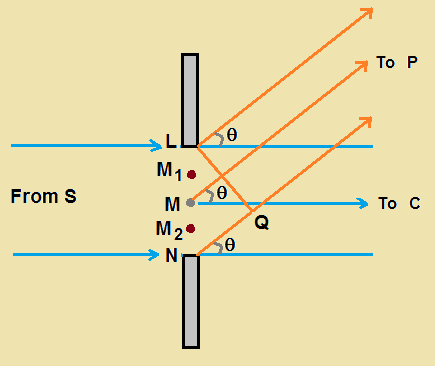
A Straight line through M perpendicular to slip plane meets the screen at C. We want the intensity at any point P on the screen. Straight lines joining P to the different points L, M, N etc., can be treated as parallel lines, making an angle θ with normal MC.
The basic idea is to divide the slit into much smaller parts and add their contributions at P with proper phase differences. We are treating different parts of wavefront at the slit as secondary sources. Because the incoming wavefront is parallel to the plane of slit, these sources are in phase. The path difference NP-LP = NQ = a sinθ ≈ a θ .
Similarly if two points M1 and M2 in the slit plane are separated by y, the path difference M2P - M1P = yθ . We now have to sum up equal, coherent contributions from a large number of sources, each with different phase. At centre pt on C on the screen, angle θ is zero. All path differences are zero and hence all the parts of the slit contribute in phase. This gives maximum intensity. Experimental observation indicates that the intensity has a central maxima at θ=0 and other secondary maxima at θ=(n+1/2)(λ/a) and has minimum at θ = n(λ/a). where n = ±1, ±2.... etc.
Consider first the angle θ where path difference aθ is λ. Then θ = λ/a. Let us divide the slit into two equal halves. LM and MN are each of size a/2. For every point M1 in LM there is a poit M2 in MN such that M1M2 = a/2. Path difference between M1 and M2 at P = M2P-M1P = θ(a/2) = λ/2 for the angle chosen. This means the contribution from M1 and M2 are 180º out of phase and cancel in the direction θ=λ/a. Hence contribution from the two halves of the slit LM and MN, cancel each other in the direction θ=λ/a. One can similarly show that intensity is zero for θ=nλ/a, n being any integer. The angular size of central maxima increases when the slit width decreases.
It is also easy to see why there are maxima at θ = [ n + (1/2)] (λ/a) and why they go on becoming weaker and weaker with increasing n . Consider an angle θ=(3/2)(λ/a) which is midway between two of the dark fringes. Divide the slit into three equal parts. If we take first two-thirds of the slit, path difference between two ends would be (2/3)aθ = (2/3)a [ 3λ/(2a) ] = λ . The first two-thirds of the slit can therfore be divided into two halves which have λ/2 path difference. The contributions of two halves cancel in the same manner as stated above. Only remaining one-third contribute to the intensity at a point between two minima. Clearly this will be much weaker than the central maximum (where the entire slit contributes in phase ). One can similarly show that there are maxima at [(n+(1/2)](λ/a), with n= 2,3 .. etc. This become weaker with increasing n. since only 1/5, 1/7..etc of slit contributes.
Central diffraction band angular width θ is given by, θ = λ/a. hence increasing slit width makes central diffraction band narrow. since narrow region becomes central maxima, intensity increases.
Answered by Thiyagarajan K | 21 Jun, 2018, 05:07: PM
Concept Videos
CBSE 12-science - Physics
Asked by artabandhusahu85 | 24 Apr, 2024, 12:07: PM
CBSE 12-science - Physics
Asked by niharvijayvargiya5 | 23 Apr, 2024, 06:40: PM
CBSE 12-science - Physics
Asked by kulhariabhijeet | 21 Apr, 2024, 02:39: PM
CBSE 12-science - Physics
Asked by mohapatraswetalina88 | 21 Apr, 2024, 12:18: PM
CBSE 12-science - Physics
Asked by aishaisha091098 | 19 Apr, 2024, 04:54: PM
CBSE 12-science - Physics
Asked by dasrituparna1999 | 13 Apr, 2024, 06:56: AM
CBSE 12-science - Physics
Asked by dasrituparna1999 | 12 Apr, 2024, 09:26: PM
CBSE 12-science - Physics
Asked by mishrigupta19319 | 08 Apr, 2024, 06:28: PM
CBSE 12-science - Physics
Asked by madhav9119887644 | 07 Apr, 2024, 08:10: PM






